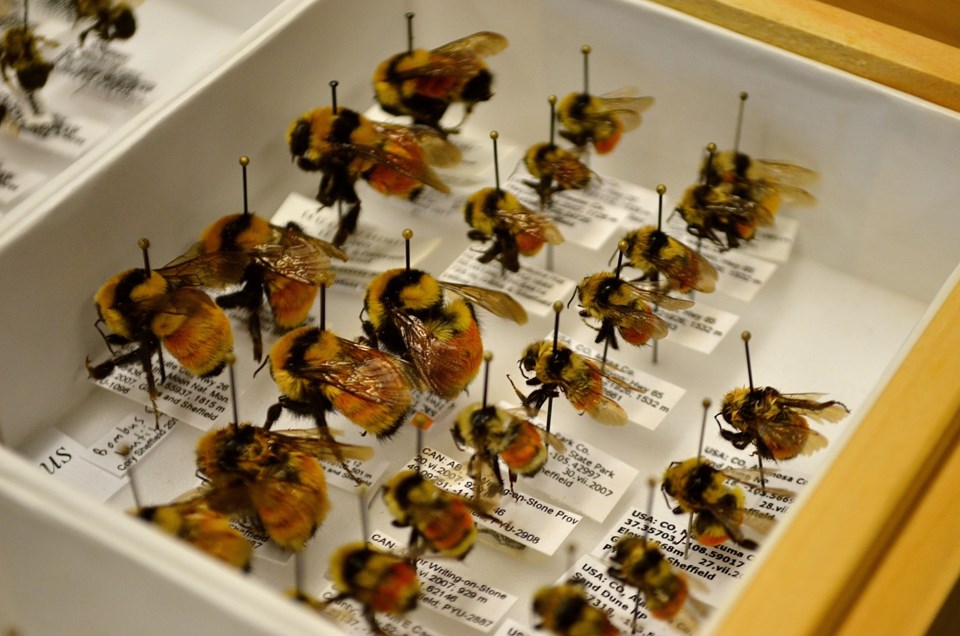An organization from Sault Ste. Marie is one of the latest to join a province-wide initiative to trap and study the variety and numbers of wild pollinators in Ontario.
“We were contacted by Professor Nigel Raine at the University of Guelph,” said Christine O’Reilly research technician for RAIN the Rural Agri-Innovation Network. “He is coordinating a provincewide pollinator study and was looking for some volunteer sites in Northern Ontario.”
RAIN is a project of the Sault Ste. Marie Innovation Centre and NORDIK Institute. Their goal is to promote a resilient farm and food sector in northern Ontario.
RAIN volunteers are working throughout the summer and fall to collect insects and send them to the U of G where they will be identified and counted.
“We were able to establish some sites in the Algoma district,” said O’Reilly. “The data coming out of these sites is unique because there hasn’t been other pollinator research done in northern Ontario. I think there is 15 or 20 years of data from southern Ontario.”
Worldwide declines in wild and managed pollinators have raised concerns about the future health and diversity of wild plants and food crops and accordingly global food security.
Managed and wild bees as well as other insects provide pollination for a third of the fruits and vegetables we produce. Honeybees that are typically managed by commercial beekeepers do some of that pollination.
The decline in honeybee populations resulting from pesticide use and a variety of other environmental factors has inspired several studies and led to new agricultural practices and pesticide regulations in Europe and Ontario.
Honeybees have been the focus for most of the research in Canada but little is known about the health and diversity of wild bees and other pollinators.
There are about 825 to 850 bee species in Canada and roughly 50 per cent of those species are found in Ontario.
“There is no data from Northern Ontario which means that we don’t have anything to compare it to,” said O’Reilly. “This is completely new information and it will be a baseline for any future pollinator work in the district.”
The initiative has brought together a wide variety of groups and individuals such as farmers, students, beekeepers, scientists, NGOs, government ministries and businesses to monitor more than 50 sites across Ontario.
“The volunteers are central to this due to the scale and the time and we are incredibly grateful to all of our partners who are helping us with this,” said project leader Prof. Nigel Raine from the Rebanks Family Chair in Pollinator Conservation at the U of G.
“The RAIN network has been fantastic at putting us in contact with various volunteers in the Sault Ste Marie area,” he said.
Raine and his team have sent out sampling kits and instructions to all the volunteers.
“We’ve talked them through the process so it is all consistent and replicable,” said Raine.
“So, this is kind of a scientist led, citizen-science project in that sense.”
The insects are collected in yellow, blue and white plastic bowls or pan traps filled with water and a small amount of scentless dish soap.
“They are different colours because they are attractive to different types of pollinators,” said Raine. “They look like big flowers.”
The traps are put out for a day every two weeks in a variety of urban, suburban, rural, parkland, wetland and agricultural locations. At the end of the day the insects are sifted through a strainer, put in bags and labeled.
“Then we have the big job of bringing them all back here and sorting through them, pinning them and identifying them,” said Raine. “That is going to be quite challenging in some respects because some of them may be new species to Ontario. They may even be a new species to Canada.”
